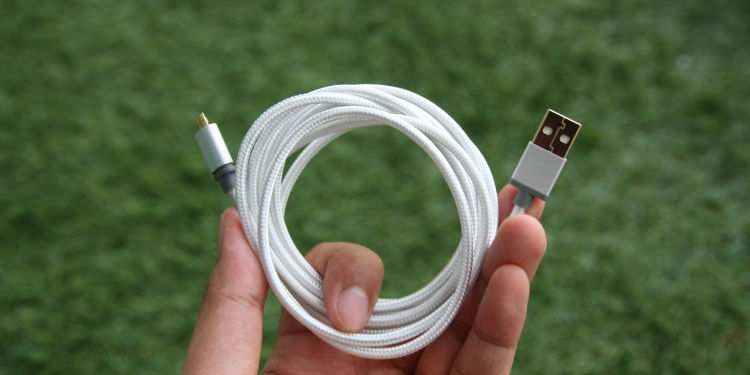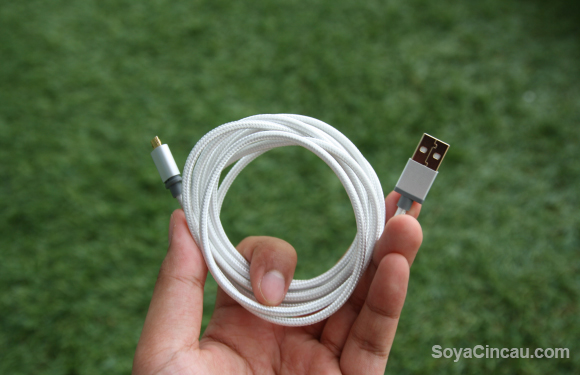I love instant noodles. When I was much younger, instant noodles were a breakfast treat and the mornings where I got to have a packet were the only mornings I would wake up early. The thing is, in the past, I only ever had Cintan’s Perisa Asli noodles and I never thought of trying the other flavours because Perisa Asli was already so good. That was until I tried one of the super spicy kari berapi type noodles. One slurp and I was hooked, I could never go back to good ol’ Perisa Asli.
In a way, this is the same case for me and USB cables. I’ve always only used the USB cables that came out of the box because I figured they’d work the best with their device. I never thought I’d need anything else.
Well, that was until I got my hands on the gold-coated Winnergear MicFlip Fully Reversible MicroUSB cable. A mouthful, but this is essentially the kari berapi of USB cables and it’s awesome.
If you want a spec sheet for this cable, a lot of it is in the name. So let’s break it down and allow me to answer all of your pressing questions.
Why on earth would I want a fully reversible MicroUSB cable?
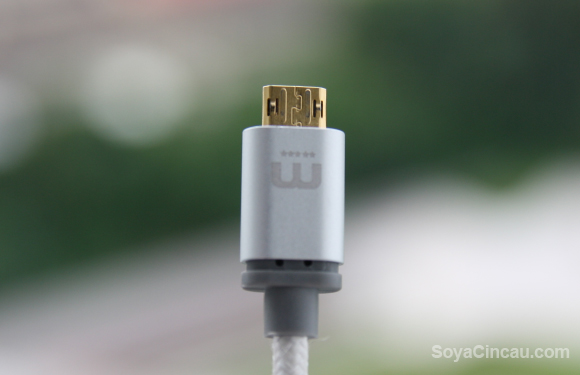
Well, when USB Type-C devices first came out, one of their biggest selling points was that you didn’t have to fumble around when you want to plug your cable into your smartphone. This was because Type-C cables were reversible, something Type-A and MicroUSB cables weren’t.
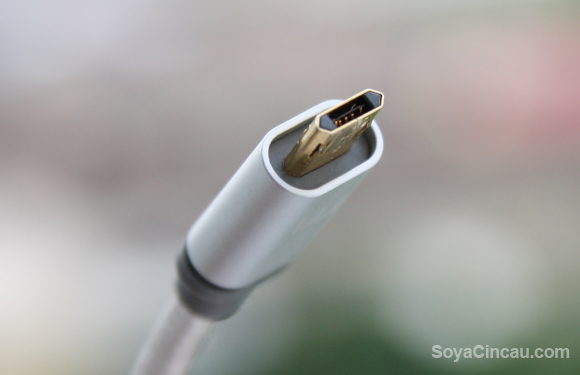
The MicFlip solves this with a complicated hexagonal shape that looks sort of like two MicroUSB ports glued back to back. At first, it took some effort to get it plugged into our Galaxy S7 edge, but after the first time, it was a whole lot easier to stick it in.
I didn’t think it’d make much of a difference at first, but once I went back to a regular MicroUSB cable, I kept forgetting and getting it wrong. It’s not something you immediately notice, but it definitely makes a difference.
Now, why on earth would I want a gold-coated MicroUSB cable?
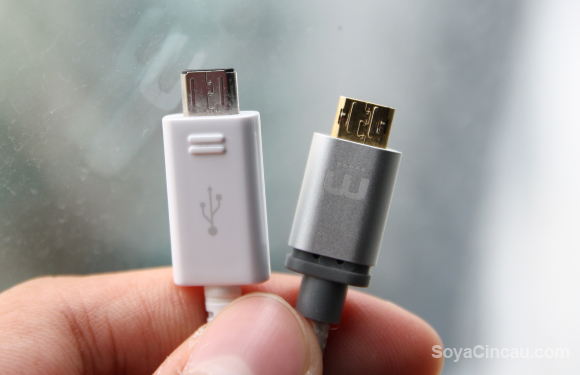
On Winnergear’s site, they say that the gold helps keep the USB plugs corrosion resistant. That makes sense because gold is the least reactive of all metals, existing in a state that’s benign to the environment.
In case you didn’t already know, corrosion is a natural process that reduces a refined metal into a more stable form such as oxide, hydroxide or sulfide. It is basically the gradual destruction of the metal (or sometimes other materials) via a chemical reaction to its surrounding environment.
Science lesson over, since gold is so stable and non-reactive, it doesn’t undergo this process (do correct me if I’m wrong) and as a result, will not corrode naturally even on a geological time scale.
Theoretically, this means that your cables won’t corrode as easily or as quickly as the regular cables that come with your smartphone. Does it work? Well, so far our gold-coated USB tips are still as shiny and golden as they were when they first arrived about a month ago. Good stuff.
Okay, fine, but some shiny gold and complicated port is just a gimmick to me. Will the cable stand the test of time?
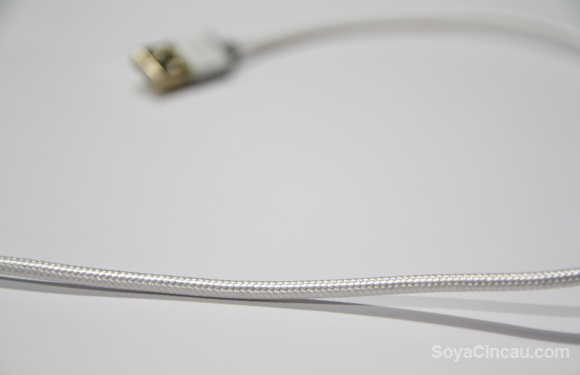
I feel you. One of my biggest problems with rubber cables is the rubber breaking. I’ve killed many a USB cable by tripping over them, rolling my chair over them, using the cable to fish for my phone, using them in tug-of-war competitions…
Okay maybe I’m just a cable abuser, but the point is that I’ve killed plenty of out-of-the-box cables.
With the MicFlip though, this isn’t that easy. The cable is braided (so not your usual rubber cable) and wound really tight. This makes the cable rather firm and that might take some getting used to if you’re coming from a flimsy rubberised one.
But, that tight winding pays off in terms of build. This cable feels so solid you could probably jump rope with it. Actually, you can totally jump rope with it, we’ve tested it.

That said, it will take some getting used to as it’s not as easy to bunch up or wind as regular cables. But, the good thing about that is that your cable won’t get tangled so easily. I keep all my charging cables and power bricks in a tiny bag (I know, I know, that’s a disaster in the making) and often times the MicFlip is the only cable that doesn’t get tangled into a knot.
Hmm, alright. What about data transfer and charging?
Well, I definitely didn’t notice any difference between the MicFlip and a regular cable. Our Samsung Galaxy S7 edge got its adaptive fast charging just as it would with a regular cable. Data transfer speeds were the same between the MicFlip and a regular cable too. It took about 5 seconds to copy a 100MB file from my PC into a smartphone and 6 seconds to copy it out.
Okay, but what’s the bottom line? Should I buy one?
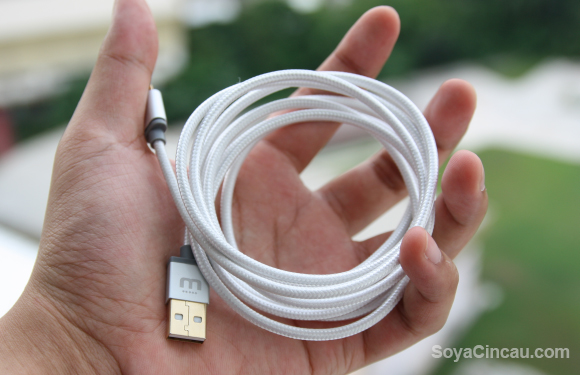
Now here’s where it gets tricky. The way I see it, the MicFlip has two things going against it: The price and the fact that it’s still MicroUSB.
MicroUSB isn’t a bad thing by any means if you’re looking at smartphones being launched this year. It probably won’t be a big deal next year either. But this cable is marketed to last a really long time — that means several years down the line — and that’s where MicroUSB will probably end up hindering its value. Smartphones and other devices are slowly but surely moving on to USB Type-C ports so why on earth would you blow a considerable amount of money on a cable that will probably be obsolete two years down the line?
When I say a considerable amount of money, I suppose that’s relative to the individual. It costs USD19.90 (around RM80) which if you compare it to the cable that comes with your smartphone, that’s USD19.90 extra.
This then brings us to the conclusion. Is it a necessity to buy one of these cables? No, absolutely not. But I can say that once you’ve had a taste of this cable, stock MicroUSB cables will never be the same again.
UPDATE: Since many of you are asking, you can pick up this handy dandy MicroUSB cable from Winnergear’s website. They also provide free worldwide shipping.

